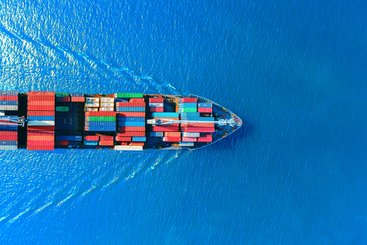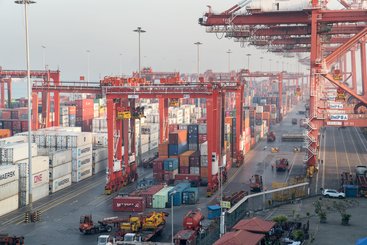Almost a year since Russia’s invasion of Ukraine, the Central Asia region continues to grapple with the ripple effects of the changing geopolitical environment. With Russia focused on Ukraine, new opportunities have emerged for engagement in a region which was until recently under Moscow’s sway.
China and Türkiye continue to consolidate and further their respective positions in the region as part of a wider reshaping of the regional order. At the same time Iran has begun to flex its muscles in Central Asia, particularly in regard to connectivity and trade routes. Increasing engagement in the region is a long-term foreign policy priority of President Ebrahim Raisi, as shown by his decision to choose Tajikistan as the destination of his first presidential trip. Iran is increasingly seeking engagement in the region to avoid growing isolation from international sanctions, and to boost the regime’s popularity at home at a time of extensive domestic unrest.
Countering Western sanctions
Iran’s increasing push to create new trade opportunities in Central Asia comes against the backdrop of the hostile international environment the country finds itself. This is largely due to Western sanctions stemming from the country’s nuclear programme as well as regional tensions relating to ongoing hostilities with Saudi Arabia. In addition, recent predictions that Iran is on the brink of recession, and rising inflation, have intensified pressure for the country to insulate itself from economic shocks triggered by sanctions.
At the same time, Iran is making progress to diversify its economy to address these issues. In April this year the country will become a permanent member of the Shanghai Cooperation Organisation (SCO), a Eurasian political, economic and security forum, following the formal signing of membership in Uzbekistan last October. Membership of the SCO will boost Iran’s trade activity with Central Asia and allows for further engagement with the SCO’s two major economies, China and India. Iran is also intensifying its engagement with the Eurasian Economic Union following the recent extension of the Free Trade Agreement until 2025 - supporting Tehran’s efforts to position itself as a leading external partner for the Central Asia region.
The Chabahar Port
The strategically important Chabahar Port, which connects India with Central Asia and Afghanistan, has supported Iran’s ambition to expand its maritime economy and trade. Launched by Iran in 2017 in partnership with India, the port has evolved to become a global trading hub, offering alternative access to Central Asian markets to transport goods while also providing Iran with direct access to international waters which are currently exempt from US sanctions.
The Port has taken on additional importance in the context of the Russia-Ukraine war. According to the latest figures, Central Asian economies continue to feel the economic shocks from the war. Access to regional ports, such as Chabahar Port, offers entryways for desired economic engagement. Uzbekistan has shown its enthusiasm for the port, calling for additional connections with regional networks, and in 2021 Kazakhstan announced its support for further development of the port , especially in the context of it being India’s largest trading partner in Central Asia.
By virtue of Iran’s geography, the Chabahar Port, including Iran’s accession to the SCO, has served as silver linings during a challenging period for the country, as it finds ways to manage increasing international isolation. As a connectivity point across Central, South and Southeast Asia, and the Middle East, the Chabahar Port could serve as an attractive alternative to the current favourite transport route, the Middle Corridor. While Iran knows that it cannot compete with economic heavyweight China, or Türkiye with its offer of bringing together the Turkic world in the region, it is increasingly using connectivity via the Chabahar Port as means to project its influence across the region.
Risky business
While Iran pushes forward for greater engagement in Central Asia, it is likely that the regional economies will view involvement with Iran as a risk due to political uncertainty associated with Iranian cooperation. This is particularly the case at a time when Central Asian countries are seeking stable and reliable external partners following Russia’s secession. Another key shortfall with Iran’s Central Asia approach is the danger of geoeconomic confrontation with China in relation to competitive trade routes in the region. For these reasons, Iran’s advances in the region are likely being closely monitored by the current regional powers China and Türkiye, and further afield by India, Pakistan and others.
However, as Central Asia goes through a period of regional recalibration, Iran’s position should not be overlooked. While in the short-term Iran provides a challenging context for investment and engagement, for as long as the region remains a top foreign policy priority for Tehran, the country will push for greater engagement and seek to gain a stronger foothold in Central Asia.



